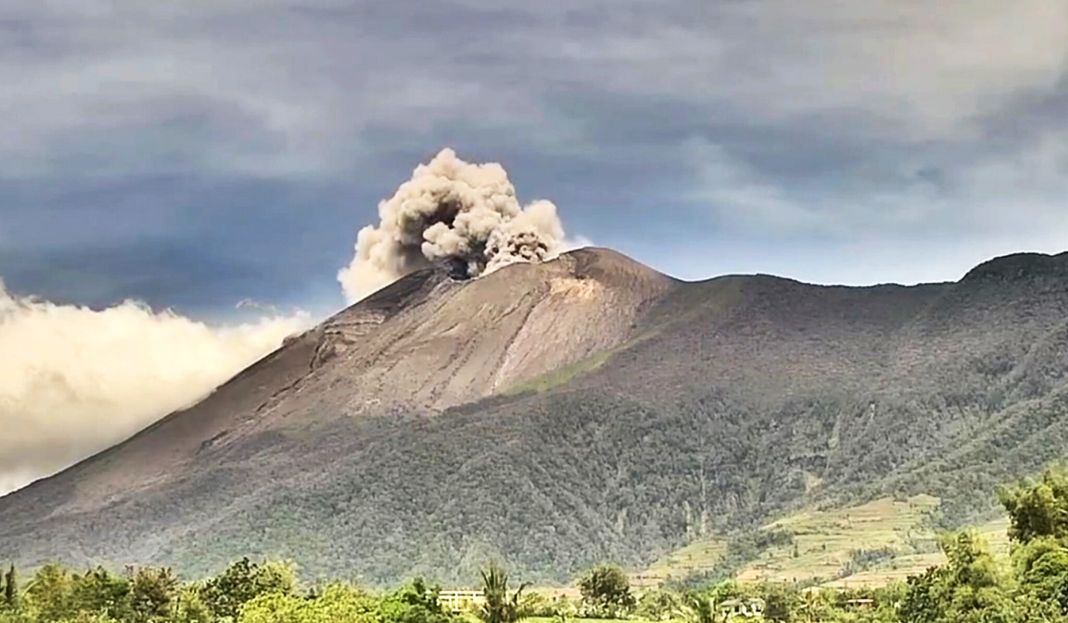BACOLOD CITY – The Philippine Institute of Volcanology and Seismology (PHIVOLCS) expects more ash emissions, even a moderate explosive eruption of Kanlaon Volcano, which is under Alert Level 2 status.
That is why, we are emphasizing that there should be no people within the 4-kilometer permanent danger zone, PHIVOLCS director Teresito Bacolcol disclosed recently.
On October 24, Kanlaon Volcano had its 5th explosive eruption since June 3 last year, causing ashfall and sulfuric odor to affect 18 barangays of eight local government units in Negros Island. It was followed by three ash emission events on Saturday.
PHIVOLCS also logged a four-minute ash emission at the Kanlaon Volcano summit crater on October 27.
Bacolcol stressed that ash emissions and eruptions could take place even on Alert Level zero status.
Eighty families, composed of 284 persons, who are residing within the 4-kilometer danger zone, have been staying in six evacuation centers for almost 10 months already.
Previous Kanlaon Volcano eruptions were recorded on June 3 and December 9 last year, as well as February 6 and May 13 this year.
Bacolcol reported 18 ash emissions of Kanlaon since June 3 last year, three of which were last recorded on Oct. 25, which he said is part of the activity of the volcano that is consistent with its Alert Level 2 status.
PHIVOLCS recorded a lava eruption of Kanlaon Volcano in 1903.
Asked for his assessment on the preparedness of local government units surrounding Kanlaon Volcano, Bacolcol rated them as “well prepared,” after experiencing Alert Level 3 status, where residents within the six-kilometer danger had been evacuated.
In his speech during the opening of the Handa Pilipinas sa Bagong Pilipinas-Visayas leg activity of the Department of Science and Technology at the SMX Convention Center in Bacolod City, Governor Eugenio Jose Lacson said that Negros Occidental has endured some of these challenges firsthand – from floods, the eruption of Mt. Kanlaon, and the recent earthquakes that have tested their preparedness and solidarity.
These experiences remind us that resilience is not an option; it is a compelling duty we must continue to build upon every day, Lacson said.
Let us remember that disaster resilience is not the sole responsibility of government. It is a shared duty that calls upon the cooperation of every Filipino, from planners and engineers to farmers, fisherfolk, and families in every household, he added. (Gilbert Bayoran via tvds)
